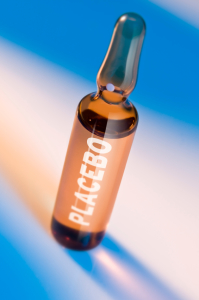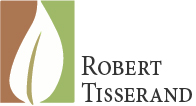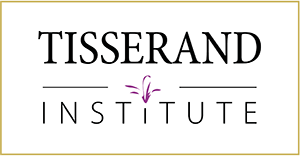I have been reading a book called Bad Science by an English doctor, Ben Goldacre. His principal targets are the media (for consistent misinformation), nutritionists and homeopaths, but all “quacks” are fair game, since “quack therapy”, according to Ben, is no more than placebo. He goes to great lengths to explain that the placebo effect is indeed potent, and that he has no problem with “placebo therapy”. But, he thinks it’s time for alternative medicine to either produce some convincing clinical trials, or concede that it is no more than placebo therapy. I think that’s a fair summary of his position.
Aromatherapy is not specifically discussed in Ben’s book, nor on his blog at www.badscience.net. However, thyme oil is fleetingly mentioned on page 70 of the book, and this piqued my interest. He says: Montgomery and Kirsch (1996) told college students that they were taking part in a study on a new local anaesthetic called ‘trivaricaine’. Trivaricaine is brown, you paint it on your skin, it smells like a medicine, and it’s so potent you have to wear gloves when you handle it: or that’s what they implied to the students. In fact it’s made of water, iodine and thyme oil (for the smell), and the experimenter (who also wore a white coat) was only using rubber gloves for a sense of theatre. None of these ingredients will affect pain.
 I looked at Montgomery and Kirch’s paper. Volunteer undergraduate students had the placebo gloop applied to one index finger. They then placed both index fingers in a device which delivered 2,041 g of force to the top of each finger simultaneously. Pain was subjectively assessed, and was significantly lower in “placebo fingers”. There is some discussion about which aspect of the placebo effect might be in evidence. By the way, no effort was made to “blind” the volunteers as to which finger the placebo gloop was applied.
I looked at Montgomery and Kirch’s paper. Volunteer undergraduate students had the placebo gloop applied to one index finger. They then placed both index fingers in a device which delivered 2,041 g of force to the top of each finger simultaneously. Pain was subjectively assessed, and was significantly lower in “placebo fingers”. There is some discussion about which aspect of the placebo effect might be in evidence. By the way, no effort was made to “blind” the volunteers as to which finger the placebo gloop was applied.
It’s a rather poorly written paper in some respects, so is a curious choice for Ben Goldacre and his high standards of science. The placebo is described as “a mixture of iodine, oil of thyme, and water, which produced a brownish, medicinal-smelling effect when applied topically”. They do not tell us how much thyme oil was used, nor why they believe it to be devoid of analgesic activity.
Now, I’m not here to argue that the placebo effect doesn’t exist, or that placebos can’t have sometimes dramatic effects on pain reduction. I’m just saying – thyme oil is a pretty weird choice for a substance that is supposedly known to be a non-analgesic. Why? About 50-70% of thyme oil consists of a substance called thymol. Here is some information about thymol:
- “Thymol is….also employed as a local anaesthetic” Mrs Grieve, A Modern Herbal, 1931
- “Dentists all over the country are visiting their druggists. They are buying three things: thymol, ethyl alcohol, and sulphuric ether. These are the ingredients of the new Hartman formula that takes the pain out of tooth drilling.” Thymol, alcohol, ether used in new dental pain killer. Science News Letter February 1, 1936.
- US Patent no. 6531115, filed in March 2003, describes an herbal liquid preparation for quick relief of toothache. Thymol is an active ingredient.
- “Although analgesic effects have long been described for thymol, a molecular basis for these effects is still lacking….Antinociceptive and local anaesthetic effects of thymol…might be mediated via blockade of voltage-operated sodium channels with…thymol being as potent as the local anaesthetic lidocaine.” Haeseler G et al 2002 Voltage-dependent block of neuronal and skeletal muscle sodium channels by thymol and menthol. European Journal of Anaesthesiology 19:571-579.
- “On the other hand, the inhibition of the release of noradrenalin in the nerve cells can lead to a reduced conductivity of the nerve structures conducing pain. This means that we can expect an analgesic effect from the application of thymol.” Beer A-M et al 2007 Effect of thymol on the spontaneous contractile activity of the smooth muscles. Phytomedicine 14:65-69.
I could go on, and refer to papers on transient receptor potential channels, and why both thymol and carvacrol (another common thyme oil constituent) have probable pain-inhibiting effects through TRP channel interaction. But, all I’m trying to do is cast some doubt on the non-analgesic assumption.
So, maybe it was the white coats and rubber gloves performance, but maybe it was the thyme oil. I enjoyed reading Bad Science, even though it’s an attempt to rubbish alternative medicine. But Ben, what made you think that thyme oil could not be analgesic? Did you assume that it wasn’t, as this effect is not mentioned in the medical tomes? Or did you simply assume that the authors of a 1996 paper on the placebo effect had to be right. After all, they were scientists. Well, psychologists anyway.

